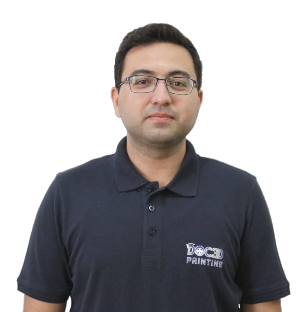ESR13 - Muhammad Arif Mahmood
|
|
Nationality: |
Pakistani |
|
Host Institution: |
INFLPR, Romania | |
|
Supervisor: |
Ion Mihailescu | |
|
Subject: |
Characterization and Modelling of optical properties and dispersing of ceramic materials |
Background:
Muhammad Arif Mahmood was born in Pakistan. He completed his bachelor’s in Industrial and Manufacturing Engineering from University of Engineering and Technology (UET), Lahore, Pakistan. During his bachelor’s degree, he completed different internships in various organizations in Pakistan such as Suncrop Pesticides, Multan Spinning Mills, Transfab, Pak Elektron Limited. In his internships, he worked on different projects related to manufacturing processes, process designing and control, and quality assurance and control. He did his bachelor’s final year thesis on Ergonomics and Lean manufacturing strategies in the collaboration with Interwood Mobel PVT. LTD Pakistan and Industrial and Manufacturing Engineering Department, UET, Lahore.
His motivations in final year project were to implement the Lean manufacturing and Ergonomics techniques to optimize the quality of manufactured parts, to reduce the cost of manufacturing processes, to develop a safe, healthy and comfortable working environment, and to fit the job for the workers as per their working capabilities.
After completing his bachelor’s degree, he was ambitious for higher studies. Therefore, he moved to Taiwan to study master’s degree at Mechanical Engineering Department, National Cheng Kung University (NCKU), Taiwan. In Master’s degree, he showed his skills in a project which was in-collaboration with China Steel Corporation, Kaohsiung, Taiwan and Micro/Nano Tribology, Laboratory, NCKU, Taiwan. This project was related to the development of a three-dimensional fractal model (mathematical model) for cold rolled surfaces. He developed this mathematical model for deformed and un-deformed surfaces achieved after cold rolling process, which were used to observe light properties. He tested this model for Aluminum and CQ Steel cold-rolled specimens, and Tool Steel roll surface morphologies simulations. Meanwhile, he also performed optical experimentations using imaging sphere for scatter and appearance measurement (IS-SA) machine.
Later, he compared experimental and simulational optical results to provide the trustworthiness of three-dimensional fractal model. Later, he built-up relationships between optical and fractal parameters not only for the cold rolled specimens but also for the roll surfaces in order to define optimal operating conditions to achieve desired optical properties. Last but not least, he carried out X-Ray Diffractometer, Micro/Nano Tensile, and Rockwell hardness testings to study the effect of reduction ratios over phase transformations, and mechanical properties which mainly include Young’s modulus and Hardness.
Besides his academic achievements, he performed very well in extracurricular activities. He served as a director technical section mechanical wing in The American Society of Heating, Refrigerating and Air-Conditioning Engineers (ASHRAE), student chapter, UET Lahore, from 2015-2016. He won the best poster competition in 2016 related to his bachelor’s final year project at Industrial and Manufacturing Engineering department, UET, Lahore, Pakistan. He won the excellent paper award from Allring Tech. Co., LTD, Taiwan, in 2018. Furthermore, he achieved NCKU-SinoPac, Atelier future award under the category of “outstanding talented student” in 2017, due to his excellent performance in master’s research project.
All these experience gave him strong background in simulations and manufacturing tools, which will be helpful in DOC-3D-Printing project.
Description of Project:
ESR13: Characterization and Modelling of optical properties and dispersing of ceramic materials (National Institute for Laser, Plasma & Radiation Physics (INFLPR), Romania).
In this modern time, simulation technique is a powerful tool for real-time analysis without dealing with experimentations which are expensive, time-consuming and need various resources. Therefore, in this project, efforts will be carried out to design simulational setup in a manner to find out the close correspondence between simulational and experimental results.
The main objectives of this project will be:
- Literature survey in order to select the appropriate ceramic materials.
- Participation to dedicated experiments with 4 laser sources and two high vacuum irradiation chambers.
- Complex characterization of laser processed samples by different congruent techniques.
- Development of models and codes for the interpretation of experimental data.


